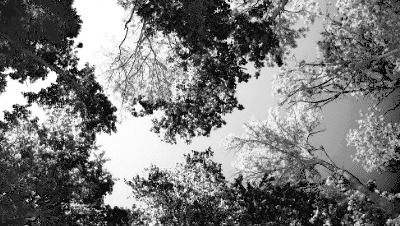'Earth's the right place for love: I don't know where it's likely to go better. I'd like to go by climbing a birch tree, and climb black branches up a snow-white trunk. Toward heaven...' – Robert Frost.
Macomb, Illinois, which is recognized as a Tree City USA by the Arbor Day Foundation, prides itself on the thousands of trees growing throughout the community, as well as the management of the trees that fall under the purview of the city. Besides being recognized as a Tree City, Macomb has also received a Growth Award from the foundation for demonstrating the city's dedication to planting, growing and maintaining trees. To be named a Tree City, a community or organization must maintain a tree board (Tree Board members, appointed to three-year terms by the mayor, can be found at (cityofmacomb.com/ boards-and-commissions), have a tree care ordinance in place, dedicate an annual forestry budget and host an Arbor Day event.
Macomb is unique for a community its size to have a full-time urban forester as part of the city's roster. Skip Bowles has served as the City of Macomb's urban forester since 2017. In that role, he's responsible for maintaining the health and vitality of the city's 6,000-plus tree inventory, which includes the pruning and care, cutting down when necessary, watering, planting new trees, treating for disease and insects, assessing tree health and more along the city's many rights-of-way, boulevards, medians, city parks and other city-owned spaces and properties.
'While we'll remove trees on city property, if a homeowner has a tree that falls on a sidewalk or the street, anything that goes from the curb into the street, we'll certainly take care of that part of the clean-up to ensure that vehicular traffic and pedestrians can get through without issues,' he said. 'The city's responsibility is the removal of, care of, pruning and replanting of trees on public, and city-owned property, which would include trees and large limbs that fall out of private yards onto the public sidewalk and streets.'
While the city has no jurisdiction over trees on private property, and their removal (or the planting of new trees), what Bowles and his co-workers can do is work with homeowners to determine the health of a tree and provide sound guidance, such as with the Emerald Ash Borer 'invasion.' Bowles noted that Macomb was 'incredibly lucky,' unlike some communities, such as those in the Chicago suburb which lost thousands of trees, some close to 70 percent of their trees, due to the ash borer. Bowles and his team took down nearly close to 400 Ash trees on city property over a four-year timespan, and when that task was done, he sent letters to homeowners who had Ash trees on their property to provide information on mitigation. Unfortunately, the only way to get rid of the invasive, destructive species is to cut down a tree, or to do chemical injections, which must be done every three years, he added.
'While we will not remove trees on private property, we will determine if a tree is dead or dying and poses a liability to the homeowner,' Bowles pointed out. 'When a homeowner calls us about a tree on private property, we will send a letter of abatement, if necessary, informing the resident of the risk, be it a life safety issue, a utility disruption or structural damage caused by the tree. We will not remove the tree, and do we get into survey-related issues on a homeowner's property.'
How do Bowles and city staff keep tabs of the 6,000-and-some trees? They rely on the eyes of homeowners and residents, he shared. The city's trees are all 'mapped' thanks to Western Illinois University's GIS Center, under the direction of Chad Sperry. His GIS staff have mapped all the trees within the City of Macomb, and Bowles can go into that database to update the city's 'inventory' when necessary.
'We drive around and look at the trees, but we really do count on homeowners to let us know when they see an issue,' Bowles explained. 'We're always looking, especially after major storms. I'll take a walk through Chandler Park, and we'll respond to reports that we receive. But we'll drive around to pick up branches, clean out catch basins and do what we can to make sure everything is okay.'

To determine if a tree is at risk – or a risk to safety – Bowles relies mostly on visuals. It comes down to the species of the tree, he said, and what he and other city employees see without specialized (and often expensive) equipment.
'We have 6,000 trees, which amounts to millions of branches. We have to look up to see what we can see,' Bowles added.
And when trees have to be removed, Bowles' goal is to plant at least two to three trees, if spacing and conditions allow, for every tree that is cut down. When he's looking at replanting, the first thing he does is stake it out and call 'JULIE' to determine utilities. After getting that report, he might go back and tweak his plans to make sure if, for example, a sewer or water line has to be dug up, it won't impact the new tree.
'One of the biggest dilemmas we're currently facing is that our predecessors many years ago wanted to line the streets with trees, so that's what they did. Now we're faced with removing trees that have been affected by insects and disease, weren't the right species for the place they were planted or were planted too close to water and sewer lines or driveways,' he stated.
Macomb is going to be adding about 25 more trees to its inventory as the community is one of eight in the state to receive an extension grant to plant more trees in historically underserved areas of the city. As part of the grant, Macomb is just one of two of the recipients to be included in fall and spring plantings.
As for the planting of new trees, the ideal situation is a collaboration with the homeowner to place the tree on private property, which can help the tree's viability as often public rights-of-way are dug up for utility work, which in turn can threaten a tree's health. However, the homeowner has to also understand it's an investment of time and resources to maintain a healthy sapling and growing tree, Bowles added.
'It takes at least 10-15 gallons of water per diameter inch, each week, for at least three to four years, to ensure a healthy tree,' he said. 'And when it's hot like it has been, you might have to water a lot more.'
Speaking of heat, as Bowles noted, the Earth is growing hotter with each passing year because of numerous factors, one of which is the cutting down of more and more trees to make way for more 'urban sprawl.' The mass cuttings – think of the Amazon rainforest – impact the environment.
'Trees provide so much. Just look at your recent Ameren bill. If you don't have shade trees, your utility bill is going to be even worse,' Bowles replied. 'Along with shade, they provide rainwater retention, prevent soil erosion and provide homes for birds, mammals and insects. Trees add so much value to your property and to your community, and they clean the air. When we plant trees properly and diversify the species we're planting, we are contributing positively to our environment.'








